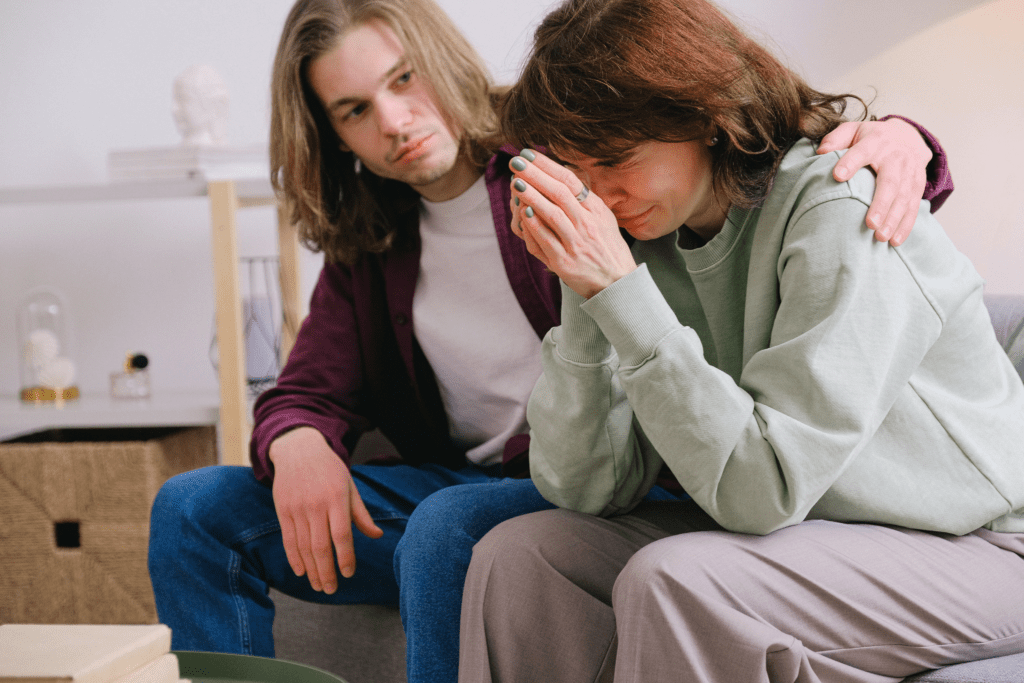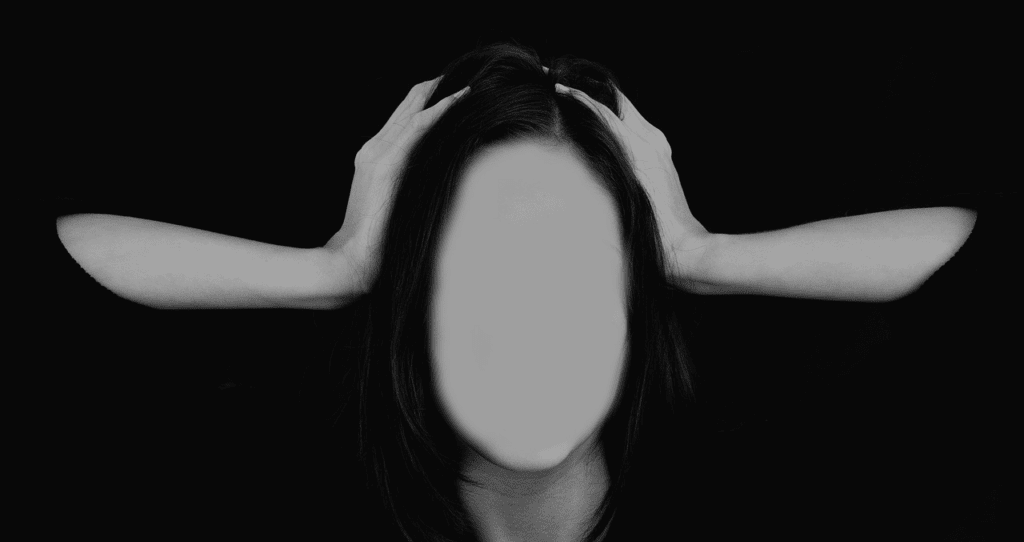Last updated on November 23rd, 2024 at 10:06 am
- 1. Understanding Anxiety Disorders
- 1.1 Types of Anxiety Disorders
- 2. Agoraphobia: Fear of Open or Crowded Spaces
- 2.1 Key Features of Agoraphobia
- 2.2 Symptoms of Agoraphobia
- 3. Social Anxiety Disorder: Fear of Social Interactions
- 3.1 Key Features of Social Anxiety Disorder
- 3.2 Symptoms of Social Anxiety Disorder
- 4. Key Differences Between Agoraphobia and Social Anxiety Disorder
- 4.1 Focus of Fear
- 4.2 Situational Triggers
- 4.3 Underlying Fears
- 4.4 Avoidance Behaviors
- 5. Causes and Risk Factors
- 5.1 Genetic Factors
- 5.2 Environmental Factors
- 5.3 Neurobiological Factors
- 5.4 Personality Traits
- 6. Diagnosis and Assessment
- 6.1 Diagnostic Criteria for Agoraphobia
- 6.2 Diagnostic Criteria for Social Anxiety Disorder
- 7. Treatment Options
- 7.1 Psychotherapy
- 7.2 Medication
- 7.3 Exposure Therapy
- 7.4 Lifestyle Changes
- 8. Coping Strategies and Self-Help Techniques
- 8.1 Mindfulness and Relaxation Techniques
- 8.2 Challenging Negative Thoughts
- 8.3 Gradual Exposure
- 8.4 Building a Support Network
- 9. Impact on Daily Life and Relationships
- 9.1 Social Isolation
- 9.2 Career and Education
- 9.3 Relationships
- 9.4 Overall Quality of Life
- Agoraphobia vs. Social Anxiety Disorder Prevalence
- Agoraphobia vs. Social Anxiety Disorder Causes
- Agoraphobia vs. Social Anxiety Disorder Comorbidity
- Agoraphobia vs. Social Anxiety Disorder Impact on Daily Life
- Agoraphobia vs. Social Anxiety Disorder Coping Mechanisms
- Agoraphobia vs. Social Anxiety Disorder in Children
- Agoraphobia vs. Social Anxiety Disorder in Seniors
- Agoraphobia vs. Social Anxiety Disorder Gender Differences
- Agoraphobia vs. Social Anxiety Disorder Cultural Differences
- Agoraphobia vs. Social Anxiety Disorder Stress Management
- Agoraphobia vs. Social Anxiety Disorder Alcohol and Substance Use
- Agoraphobia vs. Social Anxiety Disorder Family Support
- Agoraphobia vs. Social Anxiety Disorder Workplace Accommodations
- Agoraphobia vs. Social Anxiety Disorder Academic Accommodations
- Agoraphobia vs. Social Anxiety Disorder Legal Rights and Protections
- Agoraphobia vs. Social Anxiety Disorder Mindfulness Practices
- Agoraphobia vs. Social Anxiety Disorder Physical Activity
- Agoraphobia vs. Social Anxiety Disorder Psychological Symptoms
- Agoraphobia vs. Social Anxiety Disorder Diagnosis and Assessment
- Agoraphobia vs. Social Anxiety Disorder Medical Condition Links
- Agoraphobia vs. Social Anxiety Disorder Treatments
- Agoraphobia vs. Social Anxiety Disorder Pharmacological Interventions
- Agoraphobia vs. Social Anxiety Disorder Psychological Therapies
- Agoraphobia vs. Social Anxiety Disorder Model of Panic Disorder
- Agoraphobia vs. Social Anxiety Disorder Cognitive Behavioral Approaches
- Agoraphobia vs. Social Anxiety Disorder Physical Health Implications
- Agoraphobia vs. Social Anxiety Disorder Sleep Hygiene
- Agoraphobia vs. Social Anxiety Disorder Relaxation Techniques
- Agoraphobia vs. Social Anxiety Disorder Chronic Anxiety Management
- Agoraphobia vs. Social Anxiety Disorder Legal and Social Protections
- Conclusion
- Frequently Asked Questions
- What Are the Key Differences Between Agoraphobia and Social Anxiety Disorder?
- How Do Panic Attacks Manifest Differently in Agoraphobia and Social Anxiety Disorder?
- How Do Avoidance Behaviors Differ Between Agoraphobia and Social Anxiety Disorder?
- What Are the Most Effective Treatment Options for Agoraphobia Compared to Social Anxiety Disorder?
- How Can Cognitive-Behavioral Therapy Help in Both Agoraphobia and Social Anxiety Disorder?
- Are There Medication Differences Between Agoraphobia and Social Anxiety Disorder?
- How Do Social Skills Training Differ in Agoraphobia vs. Social Anxiety Disorder?
- What Is the Role of Exposure Therapy in Treating Agoraphobia vs. Social Anxiety Disorder?
- How Does Agoraphobia Affect Physical Health Compared to Social Anxiety Disorder?
- How Do Comorbid Conditions Differ Between Agoraphobia and Social Anxiety Disorder?
- What Are the Diagnostic Criteria for Agoraphobia vs. Social Anxiety Disorder?
- How Does the Onset of Agoraphobia Differ From Social Anxiety Disorder?
- What Role Do Traumatic Events Play in Agoraphobia vs. Social Anxiety Disorder?
- How Does Agoraphobia vs. Social Anxiety Disorder Impact Daily Activities?
- What Are the Common Coping Mechanisms for Agoraphobia Compared to Social Anxiety Disorder?
- How Do Breathing Exercises Differ for Managing Symptoms in Agoraphobia vs. Social Anxiety Disorder?
- How Does Gender Influence Agoraphobia vs. Social Anxiety Disorder?
- How Does Alcohol Use Differ in Agoraphobia vs. Social Anxiety Disorder?
- What Are the Prognosis Differences Between Agoraphobia and Social Anxiety Disorder?
Anxiety disorders are among the most common mental health conditions, affecting millions of people worldwide. While there are several types of anxiety disorders, two that are often confused or misunderstood are agoraphobia and social anxiety disorder.
Though they share some similarities, these conditions have distinct characteristics, causes, and impacts on those who experience them. This article will explore the key differences between agoraphobia and social anxiety disorder, their symptoms, underlying causes, and potential treatment options.
Let’s explore Agoraphobia Vs Social Anxiety Disorder, discovering unique symptoms, risks, and treatment options for each condition.
1. Understanding Anxiety Disorders
Anxiety disorders are a group of mental health conditions characterized by excessive worry, fear, and related behavioral disturbances. These disorders can significantly impact a person’s daily life, relationships, and overall well-being. While it’s normal to experience anxiety in certain situations, anxiety disorders involve persistent and intense fear or worry that is out of proportion to the actual threat.
1.1 Types of Anxiety Disorders
There are several types of anxiety disorders, including:
– Generalized Anxiety Disorder (GAD)
– Panic Disorder
– Specific Phobias
– Obsessive-Compulsive Disorder (OCD)
– Post-Traumatic Stress Disorder (PTSD)
– Agoraphobia
– Social Anxiety Disorder
While all anxiety disorders share some common features, each has its unique characteristics and diagnostic criteria.


2. Agoraphobia: Fear of Open or Crowded Spaces
Agoraphobia is an anxiety disorder characterized by a fear of places or situations that might cause panic, helplessness, or embarrassment. People with agoraphobia often avoid specific locations or circumstances due to the fear of experiencing anxiety or panic attacks.
2.1 Key Features of Agoraphobia
The main features of agoraphobia include:
– Fear of leaving home alone
– Fear of crowded places
– Fear of open spaces
– Fear of enclosed spaces
– Fear of using public transportation
Individuals with agoraphobia may experience intense anxiety when faced with these situations, leading to avoidance behaviors that can significantly impact their daily lives.
2.2 Symptoms of Agoraphobia
Common symptoms of agoraphobia include:
– Rapid heartbeat
– Sweating
– Trembling
– Difficulty breathing
– Chest pain
– Nausea
– Dizziness
– Fear of losing control
These symptoms can be so severe that some individuals with agoraphobia may become housebound, unable to leave their homes due to the intense fear and anxiety they experience.
3. Social Anxiety Disorder: Fear of Social Interactions
Social anxiety disorder, also known as social phobia, is characterized by an intense fear of social situations and interactions. People with this condition experience significant anxiety and self-consciousness in everyday social settings, fearing judgment, embarrassment, or humiliation.
3.1 Key Features of Social Anxiety Disorder
The main features of social anxiety disorder include:
– Fear of being judged negatively by others
– Intense worry about embarrassing oneself
– Avoidance of social situations
– Difficulty making and maintaining friendships
– Extreme self-consciousness in everyday social interactions
These fears can be so overwhelming that they interfere with work, school, and other daily activities.


3.2 Symptoms of Social Anxiety Disorder
Common symptoms of social anxiety disorder include:
– Blushing
– Excessive sweating
– Trembling
– Rapid heartbeat
– Nausea
– Difficulty speaking
– Avoiding eye contact
– Intense fear of being the center of attention
These symptoms can make it challenging for individuals with social anxiety disorder to engage in normal social interactions, leading to isolation and reduced quality of life.
4. Key Differences Between Agoraphobia and Social Anxiety Disorder
While both agoraphobia and social anxiety disorder are anxiety disorders that can lead to avoidance behaviors, there are several key differences between the two conditions.
4.1 Focus of Fear
The primary difference between agoraphobia and social anxiety disorder lies in the focus of fear:
– Agoraphobia: Fear of places or situations where escape might be difficult or help might not be available in case of a panic attack.
– Social Anxiety Disorder: Fear of social situations and interactions due to the possibility of embarrassment or negative judgment from others.
4.2 Situational Triggers
The situations that trigger anxiety differ between the two disorders:
– Agoraphobia: Triggered by open spaces, crowded places, or being away from home.
– Social Anxiety Disorder: Triggered by social interactions, public speaking, or being observed by others.
4.3 Underlying Fears
The core fears driving these disorders are distinct:
– Agoraphobia: Fear of having a panic attack or losing control in a situation where escape is difficult.
– Social Anxiety Disorder: Fear of being judged, embarrassed, or rejected in social situations.
4.4 Avoidance Behaviors
While both disorders can lead to avoidance, the nature of avoidance differs:
– Agoraphobia: Avoiding specific places or situations (e.g., public transportation, crowded spaces).
– Social Anxiety Disorder: Avoiding social interactions and situations (e.g., parties, public speaking, dating).


5. Causes and Risk Factors
The exact causes of agoraphobia and social anxiety disorder are not fully understood, but research suggests that a combination of genetic, environmental, and neurobiological factors may contribute to their development.
5.1 Genetic Factors
Both agoraphobia and social anxiety disorder have a genetic component, with individuals who have family members with anxiety disorders being at higher risk of developing these conditions.
5.2 Environmental Factors
Traumatic or stressful life events, such as childhood abuse, loss of a loved one, or a history of bullying, may contribute to the development of these anxiety disorders.
5.3 Neurobiological Factors
Imbalances in brain chemicals, particularly serotonin and norepinephrine, may play a role in the development of anxiety disorders.
5.4 Personality Traits
Certain personality traits, such as shyness or a tendency to be anxious, may increase the risk of developing social anxiety disorder or agoraphobia.
6. Diagnosis and Assessment
Proper diagnosis of agoraphobia and social anxiety disorder is crucial for effective treatment. Mental health professionals use specific criteria outlined in the Diagnostic and Statistical Manual of Mental Disorders (DSM-5) to diagnose these conditions.
6.1 Diagnostic Criteria for Agoraphobia
The DSM-5 criteria for agoraphobia include:
– Marked fear or anxiety about two or more of the following situations: using public transportation, being in open spaces, being in enclosed spaces, standing in line or being in a crowd, or being outside of the home alone.
– The individual fears or avoids these situations due to thoughts that escape might be difficult or help might not be available in the event of developing panic-like symptoms or other incapacitating or embarrassing symptoms.
– The agoraphobic situations almost always provoke fear or anxiety.
– The situations are actively avoided, require the presence of a companion, or are endured with intense fear or anxiety.
– The fear or anxiety is out of proportion to the actual danger posed by the agoraphobic situations and to the sociocultural context.
– The fear, anxiety, or avoidance is persistent, typically lasting for six months or more.
– The fear, anxiety, or avoidance causes clinically significant distress or impairment in social, occupational, or other important areas of functioning.


6.2 Diagnostic Criteria for Social Anxiety Disorder
The DSM-5 criteria for social anxiety disorder include:
– Marked fear or anxiety about one or more social situations in which the individual is exposed to possible scrutiny by others.
– The individual fears that he or she will act in a way or show anxiety symptoms that will be negatively evaluated.
– The social situations almost always provoke fear or anxiety.
– The social situations are avoided or endured with intense fear or anxiety.
– The fear or anxiety is out of proportion to the actual threat posed by the social situation and to the sociocultural context.
– The fear, anxiety, or avoidance is persistent, typically lasting for six months or more.
– The fear, anxiety, or avoidance causes clinically significant distress or impairment in social, occupational, or other important areas of functioning.
7. Treatment Options
Both agoraphobia and social anxiety disorder can be effectively treated with a combination of psychotherapy, medication, and lifestyle changes.
7.1 Psychotherapy
Cognitive-behavioral therapy (CBT) is the most widely used and effective form of psychotherapy for anxiety disorders. CBT helps individuals identify and challenge negative thought patterns and develop coping strategies to manage anxiety.
7.2 Medication
Several types of medications can be used to treat anxiety disorders, including:
– Selective serotonin reuptake inhibitors (SSRIs)
– Serotonin-norepinephrine reuptake inhibitors (SNRIs)
– Benzodiazepines (for short-term use)
– Beta-blockers (for physical symptoms of anxiety)
7.3 Exposure Therapy
Exposure therapy, a form of CBT, involves gradually exposing individuals to feared situations in a controlled and supportive environment. This helps them build confidence and reduce anxiety over time.
7.4 Lifestyle Changes
Incorporating healthy lifestyle habits can complement other treatments for anxiety disorders. These may include:
– Regular exercise
– Stress management techniques (e.g., meditation, deep breathing)
– Healthy sleep habits
– Limiting caffeine and alcohol consumption
– Building a strong support network


8. Coping Strategies and Self-Help Techniques
In addition to professional treatment, individuals with agoraphobia or social anxiety disorder can benefit from various self-help techniques and coping strategies.
8.1 Mindfulness and Relaxation Techniques
Practicing mindfulness meditation, progressive muscle relaxation, or deep breathing exercises can help manage anxiety symptoms and promote overall well-being.
8.2 Challenging Negative Thoughts
Learning to identify and challenge irrational thoughts and beliefs can help reduce anxiety and build self-confidence.
8.3 Gradual Exposure
Slowly exposing oneself to feared situations, starting with less anxiety-provoking scenarios and gradually working up to more challenging ones, can help build confidence and reduce avoidance behaviors.
8.4 Building a Support Network
Connecting with others who understand and support your experiences can provide valuable emotional support and encouragement.
9. Impact on Daily Life and Relationships
Both agoraphobia and social anxiety disorder can significantly impact an individual’s daily life, relationships, and overall quality of life.


9.1 Social Isolation
Both conditions can lead to social isolation, as individuals may avoid social situations or limit their interactions with others due to fear and anxiety.
9.2 Career and Education
Anxiety disorders can interfere with career advancement and educational pursuits, as individuals may struggle with workplace interactions or avoid educational opportunities that involve public speaking or group work.
9.3 Relationships
Anxiety disorders can strain personal relationships, as individuals may have difficulty forming and maintaining close connections due to fear and avoidance behaviors.
9.4 Overall Quality of Life
The limitations imposed by anxiety disorders can significantly impact overall quality of life, leading to reduced life satisfaction and increased risk of depression and other mental health issues.
Agoraphobia vs. Social Anxiety Disorder Prevalence
Understanding the prevalence of agoraphobia and social anxiety disorder provides insight into how widespread these conditions are. It also highlights the importance of effective interventions.
The 12-month prevalence of agoraphobia is estimated to be between 1.7% and 2.1% in the general population. In contrast, social anxiety disorder affects approximately 7% of individuals annually.
This highlights the necessity for targeted treatments for anxiety disorders. They have a significant impact on daily functioning.
Agoraphobia vs. Social Anxiety Disorder Causes
Both agoraphobia and social anxiety disorder can stem from multiple factors. Genetic components play a significant role.
Environmental influences, such as a history of abuse or traumatic events, can increase susceptibility. The onset of agoraphobia is often associated with unexpected panic attacks.
Social anxiety disorder is frequently linked to social rejection or bullying. Understanding these underlying factors can assist healthcare professionals in creating individualized treatment approaches.


Agoraphobia vs. Social Anxiety Disorder Comorbidity
Comorbidity is common with both agoraphobia and social anxiety disorder. Patients with panic disorder may also experience depressive disorder.
Separation anxiety disorder and alcohol use disorders are also common comorbidities. The presence of these comorbid conditions complicates treatment of anxiety disorders.
A combination of psychological therapies, such as cognitive behavior therapy, and pharmacological interventions is often required. These interventions include antidepressant medications or anti-anxiety medications.
Treatment of panic disorder specifically may include tricyclic antidepressant options and selective serotonin reuptake inhibitors. These medications are effective in reducing symptoms.
Agoraphobia vs. Social Anxiety Disorder Impact on Daily Life
Daily life can be significantly affected by agoraphobia. It often leads to a fear of common situations such as using public transportation.
Visiting parking lots or entering public restrooms can also be triggers for those with agoraphobia. This persistent fear can hinder physical health due to reduced outdoor activity.
Social anxiety disorder affects daily life differently. Individuals avoid everyday activities that involve social interaction.
This avoidance can negatively affect social skills, work performance, and relationships. Both disorders significantly impair quality of life.


Agoraphobia vs. Social Anxiety Disorder Coping Mechanisms
Developing coping mechanisms is crucial for individuals dealing with these anxiety disorders. Behavioral therapy, specifically Cognitive-behavioural therapy (CBT), is a first-line treatment.
Exposure therapy, a subset of CBT, is highly effective in helping patients gradually face their fears. This is true for both crowded spaces for agoraphobia and social gatherings for social anxiety disorder.
Commitment therapy has also shown promising results. It reduces excessive fear by fostering psychological flexibility.
Agoraphobia vs. Social Anxiety Disorder in Children
Agoraphobia and social anxiety disorder can manifest differently in children. Selective mutism, a type of anxiety disorder, is often present alongside social anxiety disorder.
This can result in a refusal to speak in certain situations despite being verbally capable. Children with agoraphobia may exhibit extreme fear of leaving familiar environments.
These environments often include home or school. Treatment for panic disorder in children may include family-based interventions.
Such interventions address the influence of parenting and environment on anxiety development. Early intervention can lead to better outcomes.
Agoraphobia vs. Social Anxiety Disorder in Seniors
In seniors, both conditions can complicate the aging process. Older adults with agoraphobia may experience limitations in visiting healthcare providers.
This can contribute to untreated medical conditions or chronic pain. For seniors with social anxiety disorder, isolation and avoidance behaviors can exacerbate feelings of anxiety.
These behaviors may lead to comorbid conditions like depressive disorder. Addressing these mental health disorders requires age-specific interventions.
Social support networks are essential to ensure seniors remain engaged in the community. This can improve quality of life.


Agoraphobia vs. Social Anxiety Disorder Gender Differences
There are notable gender differences in the prevalence and severity of these disorders. Epidemiology studies indicate that agoraphobia is more commonly diagnosed in women.
This may be due to differences in social expectations and exposure to stressful life events. Conversely, men may be less likely to seek help for social anxiety disorder.
This occurs despite similar rates of occurrence between genders. This disparity emphasizes the importance of gender-sensitive approaches in treatment.
Agoraphobia vs. Social Anxiety Disorder Cultural Differences
Cultural differences play a role in how agoraphobia and social anxiety disorder manifest. In collectivist cultures, social anxiety disorder may be exacerbated by societal expectations.
This can lead to an increased prevalence of agoraphobic symptoms and avoidance behaviors. In contrast, in individualistic cultures, the fear of being judged is significant.
This contributes to social anxiety disorder. Understanding cultural differences is essential for tailoring treatment approaches.
These approaches should respect an individual’s background and experiences. Cultural sensitivity in treatment is crucial for effective outcomes.
Agoraphobia vs. Social Anxiety Disorder Stress Management
Stress management strategies are integral to managing both disorders. Techniques like mindfulness practices and relaxation techniques help manage intense anxiety.
These techniques help reduce muscle tension and shortness of breath. Regular physical activity also contributes to improved emotional and physical well-being.
Proper nutrition and diet can support overall health. Healthcare providers recommend these lifestyle factors alongside traditional treatments.
Traditional treatments include cognitive-behavioral therapy and medications like monoamine oxidase inhibitors. These strategies are effective for severe cases.


Agoraphobia vs. Social Anxiety Disorder Alcohol and Substance Use
Alcohol and substance use are common coping strategies among people with anxiety disorders. However, they can worsen symptoms over time.
Individuals with agoraphobia or social anxiety disorder may resort to alcohol abuse to alleviate acute anxiety. This is particularly true in social settings.
Such behaviors can result in alcohol use disorders. These disorders complicate treatment and negatively impact mental health.
Healthcare professionals often address these patterns with focused interventions. These interventions aim to reduce substance use as part of overall treatment.
Agoraphobia vs. Social Anxiety Disorder Family Support
Family support is critical in the recovery process for both conditions. For patients with agoraphobia, having a supportive companion during outings can reduce fear.
This can be especially helpful in reducing unexpected panic attacks. Family members of those with social anxiety disorder can also provide emotional encouragement.
They can assist with exposure activities. Research indicates that family involvement significantly improves treatment outcomes.
Treatments may include agoraphobia cognitive behavioral therapy and social anxiety disorder exposure therapy. Family participation enhances effectiveness.
Agoraphobia vs. Social Anxiety Disorder Workplace Accommodations
Workplace accommodations can help individuals manage their anxiety disorders. These accommodations help them maintain their professional roles.
For those with social anxiety disorder, modified job responsibilities can reduce exposure to anxiety-inducing tasks. Such tasks may include public speaking.
People with agoraphobia may require flexible work arrangements. These arrangements help them avoid locations that trigger agoraphobic symptoms.
The American Psychiatric Association emphasizes the importance of accommodations in improving quality of life. Supporting mental health is crucial in the workplace.
Agoraphobia vs. Social Anxiety Disorder Academic Accommodations
Children and adolescents with anxiety disorders may benefit from academic accommodations. These accommodations enhance their learning experience.
For students with social anxiety disorder, presentations in private settings or adjusted group work expectations can alleviate anxiety. Such accommodations are effective.
Students with agoraphobia may need allowances for remote learning. Ensuring academic accommodations are in place can mitigate ongoing worry.
This helps support both academic and emotional development. Addressing anxiety is crucial for academic success.
Agoraphobia vs. Social Anxiety Disorder Legal Rights and Protections
Individuals with agoraphobia and social anxiety disorder are entitled to legal rights and protections. These rights support their access to treatment and accommodations.
Laws such as the Americans with Disabilities Act (ADA) ensure necessary adjustments in workplaces and educational settings. These adjustments support individuals facing severe anxiety disorders.
Organizations like the Cleveland Clinic provide additional information. They offer resources on rights and treatment options.
These rights are essential for ensuring equal opportunities. Legal protections contribute to improving quality of life.
Agoraphobia vs. Social Anxiety Disorder Mindfulness Practices
Mindfulness practices, such as guided breathing exercises, are effective in managing anxiety symptoms. These practices help achieve a state of relaxation.
Relaxation can help regulate the rapid heart rate often associated with acute anxiety. Mindfulness is part of a comprehensive treatment approach.
It is useful for managing agoraphobia panic attacks or social anxiety disorder symptoms. Pollack MH, Hofmann SG have discussed the benefits of these integrative strategies.
They play a significant role in managing intense anxiety. Practicing mindfulness regularly can reduce overall anxiety.


Agoraphobia vs. Social Anxiety Disorder Physical Activity
Regular physical activity can significantly benefit individuals with agoraphobia or social anxiety disorder. Exercise releases endorphins that alleviate anxiety symptoms.
It can also help manage depressive disorders. For patients with panic disorder, activities such as walking, yoga, and swimming are often recommended.
These activities have a low likelihood of triggering panic or excessive anxiety. Healthcare professionals emphasize the importance of physical activity.
It promotes both mental and physical well-being. Further details are available in the Journal of Affective Disorders.
Agoraphobia vs. Social Anxiety Disorder Psychological Symptoms
Psychological symptoms are central to both agoraphobia and social anxiety disorder. Individuals often experience ongoing worry and excessive anxiety.
These symptoms can manifest as extreme fear of certain situations or events. The presence of psychological symptoms complicates treatment.
Psychological therapies like cognitive behavior therapy and commitment therapy are critical components. They are effective for treating excessive fear.
Agoraphobia vs. Social Anxiety Disorder Diagnosis and Assessment
Diagnosis of panic disorder and other anxiety disorders is essential. It determines the appropriate course of treatment.
The statistical manual, known as the DSM-5, is widely used by healthcare professionals. It helps diagnose these conditions accurately.
Patients often undergo a thorough assessment. This evaluates the severity of agoraphobic symptoms and social anxiety disorder panic attacks.
Agoraphobia vs. Social Anxiety Disorder Medical Condition Links
Individuals with anxiety disorders may also have associated medical conditions. Physical health can be impacted by persistent anxiety.
Common issues include rapid heart rate, muscle tension, and shortness of breath. Recognizing these links is crucial for effective treatment.
Healthcare providers address both mental and physical aspects of these disorders. Ensuring comprehensive care is key for better patient outcomes.
Agoraphobia vs. Social Anxiety Disorder Treatments
Treatments for anxiety disorders vary based on individual needs. Psychological therapies, such as Cognitive-behavioural therapy and commitment therapy, are commonly used.
These are often used alongside pharmacological approaches. Anti-anxiety medications, including tricyclic antidepressant options, are effective.
Monoamine oxidase inhibitors are also prescribed for the treatment of panic disorder and generalized anxiety disorder. Combining approaches can improve outcomes.
Agoraphobia vs. Social Anxiety Disorder Pharmacological Interventions
Pharmacological interventions are critical in managing anxiety symptoms. This is true for panic disorder and agoraphobia with panic disorder.
Patients may be prescribed antidepressant medications. These include selective serotonin reuptake inhibitors and anti-anxiety medications.
These medications help alleviate acute symptoms. Medication management is tailored by healthcare professionals for effectiveness.
Agoraphobia vs. Social Anxiety Disorder Psychological Therapies
Psychological therapies, such as Cognitive-behavioural therapy, are considered first-line treatments for anxiety disorders. Cognitive behavior therapy challenges irrational thoughts.
These irrational thoughts often lead to feelings of anxiety and excessive fear. Commitment therapy supports individuals in accepting uncomfortable feelings.
This leads to more effective coping strategies. Psychological interventions play an important role in anxiety management.
Agoraphobia vs. Social Anxiety Disorder Model of Panic Disorder
The model of panic disorder helps explain the development of agoraphobia. Recurrent panic attacks often lead to avoidance of certain situations.
This avoidance can develop into agoraphobia over time. Understanding this model is crucial for effective interventions.
Guiding treatment using the model of panic disorder improves outcomes. It helps address avoidance behaviors effectively.
Agoraphobia vs. Social Anxiety Disorder Cognitive Behavioral Approaches
Cognitive behavioral approaches are fundamental in treating anxiety disorders. Agoraphobia cognitive behavioral therapy targets fears related to public spaces.
Social anxiety disorder cognitive behavioral therapy focuses on negative beliefs around social interactions. These approaches have proven effective.
This effectiveness is supported by systematic review and meta-analysis. They are widely adopted in clinical settings.
Agoraphobia vs. Social Anxiety Disorder Physical Health Implications
Physical health is significantly affected by these anxiety disorders. Patients may experience symptoms like rapid heartbeat and shortness of breath.
These symptoms can mimic a heart attack. Chronic anxiety affects overall physical health.
Healthcare professionals address both mental and physical symptoms for comprehensive care. Addressing these issues can improve quality of life.
Agoraphobia vs. Social Anxiety Disorder Sleep Hygiene
Maintaining good sleep hygiene is essential for managing anxiety disorders. Poor sleep can exacerbate feelings of anxiety.
This often leads to a cycle of sleeplessness and increased anxiety symptoms. Strategies such as establishing a consistent sleep schedule can help.
Avoiding caffeine also supports better sleep hygiene. These strategies are beneficial for both agoraphobia and social anxiety disorder.
Agoraphobia vs. Social Anxiety Disorder Relaxation Techniques
Relaxation techniques are a valuable part of managing anxiety disorders. Techniques like deep breathing and meditation can reduce anxiety.
Progressive muscle relaxation is also effective. Incorporating relaxation techniques into daily routines helps manage symptoms.
These techniques address both emotional and physiological symptoms. They are a key part of comprehensive treatment.
Agoraphobia vs. Social Anxiety Disorder Chronic Anxiety Management
Managing chronic anxiety is a central treatment goal. Long-term plans often include psychological therapies, pharmacological interventions, and lifestyle changes.
These approaches help reduce the intensity and frequency of anxiety episodes. Ongoing support from healthcare providers is essential.
Ensuring ongoing support improves treatment outcomes. This is crucial for individuals with chronic anxiety.
Agoraphobia vs. Social Anxiety Disorder Legal and Social Protections
Individuals with agoraphobia and social anxiety disorder have access to legal and social protections. These protections ensure access to accommodations.
The Americans with Disabilities Act (ADA) provides a legal framework for necessary adjustments. This is applicable in both academic and professional settings.
Understanding these protections is key to maintaining independence. Legal protections contribute to better quality of life.
Conclusion
While agoraphobia and social anxiety disorder share some similarities as anxiety disorders, they are distinct conditions with unique characteristics and impacts on individuals’ lives. Understanding the differences between these disorders is crucial for accurate diagnosis and effective treatment.
With proper support, therapy, and coping strategies, individuals with agoraphobia or social anxiety disorder can learn to manage their symptoms and lead fulfilling lives. If you or someone you know is struggling with symptoms of anxiety, it’s essential to seek help from a mental health professional who can provide an accurate diagnosis and develop an appropriate treatment plan.
Frequently Asked Questions
What Are the Key Differences Between Agoraphobia and Social Anxiety Disorder?
Agoraphobia and social anxiety disorder are both characterized by intense anxiety, but they differ significantly in their focus. Agoraphobia is primarily the fear of open spaces or environments where escape is difficult.
This often results in the avoidance of public places like parking lots or public restrooms. In contrast, social anxiety disorder centers around an intense fear of social situations, with sufferers fearing embarrassment or negative judgment.
According to the American Psychiatric Association, these distinctions are crucial in diagnosis as they determine the specific approach required for effective treatment. Both disorders can lead to significant disruptions in daily functioning.
While agoraphobia often limits general movement, social anxiety disorder tends to impact interpersonal relationships more deeply. Understanding these differences can guide proper treatment interventions.
How Do Panic Attacks Manifest Differently in Agoraphobia and Social Anxiety Disorder?
Panic attacks are common in both agoraphobia and social anxiety disorder, but they are triggered by different situations. For people with agoraphobia, panic attacks may occur in response to being in an unfamiliar or crowded place.
In these situations, escape feels impossible, leading to symptoms like rapid heart rate and shortness of breath. Conversely, for those with social anxiety disorder, panic attacks are triggered by social interactions.
Examples include giving a speech or being the center of attention. As noted by the Cleveland Clinic, understanding these specific triggers is important for individualized treatment.
Treatment may include both behavioral therapy and anti-anxiety medications tailored to each disorder. Accurate identification of triggers can enhance treatment effectiveness.
How Do Avoidance Behaviors Differ Between Agoraphobia and Social Anxiety Disorder?
The avoidance behaviors in agoraphobia and social anxiety disorder differ based on the situations that provoke fear. Agoraphobia tends to result in avoiding open spaces and crowded locations.
This can include avoiding shopping centers or taking public transportation. On the other hand, social anxiety disorder is characterized by avoidance of social gatherings and casual conversations.
Public speaking can also be extremely challenging for those with social anxiety. According to the American Journal of Psychiatry, these avoidance behaviors contribute significantly to impairment.
Healthcare providers assess these behaviors to determine the severity of impairment in everyday activities. Differentiating these behaviors helps guide the treatment approach.
What Are the Most Effective Treatment Options for Agoraphobia Compared to Social Anxiety Disorder?
The treatment approaches for agoraphobia and social anxiety disorder often overlap but have key distinctions. For agoraphobia, exposure therapy is often the first-line treatment.
This involves gradual exposure to the feared environments to reduce anxiety. For social anxiety disorder, cognitive-behavioral therapy (CBT) is more commonly utilized.
CBT focuses on restructuring negative thoughts related to social interactions. The American Psychiatric Press highlights that both disorders may benefit from medications.
SSRIs are often prescribed for social anxiety, whereas benzodiazepines might be used for acute agoraphobia symptoms. Choosing the right treatment can greatly improve outcomes.
How Can Cognitive-Behavioral Therapy Help in Both Agoraphobia and Social Anxiety Disorder?
Cognitive-behavioral therapy (CBT) is beneficial for both agoraphobia and social anxiety disorder. For agoraphobia, CBT addresses exaggerated beliefs about danger in public places.
This helps patients gradually confront and reduce their fear of open spaces. For social anxiety disorder, CBT focuses on reducing the fear of negative evaluation by others.
Research from the Clinical Psychology Review suggests that CBT is highly effective for both disorders. Exposure techniques tailored to the specific triggers of each condition can further enhance the benefits.
Combining CBT with other therapeutic approaches can be advantageous. Personalizing treatment based on each patient’s unique experiences can lead to better outcomes.
Are There Medication Differences Between Agoraphobia and Social Anxiety Disorder?
Medications for agoraphobia and social anxiety disorder differ depending on symptoms and needs. Anti-anxiety medications, like benzodiazepines, are often used for short-term relief in agoraphobia.
This is due to their fast-acting nature. In contrast, SSRIs are typically prescribed for social anxiety disorder because they manage ongoing anxiety symptoms without risk of dependency.
According to the American Psychiatric Association, tricyclic antidepressants may be used in certain cases of agoraphobia. This is particularly true when symptoms of panic disorder are present.
Proper medication selection is key to effective treatment. It is important to tailor medications to the specific needs of each individual.
How Do Social Skills Training Differ in Agoraphobia vs. Social Anxiety Disorder?
Social skills training is more commonly employed for social anxiety disorder than for agoraphobia. This training helps individuals develop better interpersonal skills, such as making eye contact.
It also involves initiating conversations, which can be challenging for people with social anxiety. For agoraphobia, therapy tends to emphasize coping mechanisms for managing fear in public spaces.
The Journal of Affective Disorders points out that this distinction in therapeutic focus is crucial for effective intervention. The different challenges faced by individuals with these conditions require targeted strategies.
Training tailored to each condition can improve outcomes. Addressing the core challenges helps individuals regain a sense of control over their lives.
What Is the Role of Exposure Therapy in Treating Agoraphobia vs. Social Anxiety Disorder?
Exposure therapy is an integral part of treating both agoraphobia and social anxiety disorder. For agoraphobia, it involves gradual exposure to feared environments.
These may include public transportation or open spaces, which helps reduce avoidance behaviors. In social anxiety disorder, exposure therapy often involves simulating feared social situations.
Examples include attending a social event or speaking in public. The Cleveland Clinic suggests that the gradual and consistent approach makes exposure therapy effective.
The therapy helps reduce intense fear in both disorders. It also fosters resilience by encouraging new behavioral responses.
How Does Agoraphobia Affect Physical Health Compared to Social Anxiety Disorder?
Agoraphobia can impact physical health through avoidance behaviors leading to a sedentary lifestyle. People with agoraphobia may avoid exercise or even leaving their homes.
This can result in conditions like muscle tension and chronic pain. In social anxiety disorder, physical health is primarily affected through physiological symptoms like increased heart rate.
Sweating during social interactions is also common. According to Behaviour Research and Therapy, the physical impacts differ but are significant in both disorders.
Comprehensive treatment plans must address both mental and physical health. Healthcare providers consider these impacts when creating tailored treatment strategies.
How Do Comorbid Conditions Differ Between Agoraphobia and Social Anxiety Disorder?
Comorbid conditions are common in both agoraphobia and social anxiety disorder. However, the nature of these conditions often differs significantly.
Agoraphobia is frequently comorbid with panic disorder. Recurrent panic attacks contribute to the development of avoidance behaviors.
Social anxiety disorder is often associated with depressive disorders. Chronic fear of social situations can lead to ongoing feelings of loneliness and hopelessness.
The American Psychiatric Association explains that understanding comorbidities is essential. Addressing only the primary disorder may leave significant symptoms untreated.
What Are the Diagnostic Criteria for Agoraphobia vs. Social Anxiety Disorder?
The diagnostic criteria for agoraphobia and social anxiety disorder are outlined in the DSM-5. For agoraphobia, criteria include a marked fear of at least two specific situations.
These may involve public transportation or open spaces. For social anxiety disorder, the criteria focus on fear of social situations where scrutiny is possible.
According to the American Psychiatric Press, understanding these criteria is crucial for accurate diagnosis. Treatment pathways diverge based on these unique characteristics.
A thorough understanding helps guide effective intervention. Differentiating between these disorders leads to better-targeted therapies.
How Does the Onset of Agoraphobia Differ From Social Anxiety Disorder?
The onset of agoraphobia and social anxiety disorder can occur at different life stages. Agoraphobia typically develops in adulthood.
It often follows a series of panic attacks, which create a persistent fear of certain environments. In contrast, social anxiety disorder usually has an earlier onset during adolescence.
It is linked to a fear of social rejection or scrutiny. The American Journal of Psychiatry notes that recognizing the age of onset aids early intervention.
Early intervention is particularly important in younger individuals. Preventing the development of chronic forms of these anxiety disorders can improve prognosis.
What Role Do Traumatic Events Play in Agoraphobia vs. Social Anxiety Disorder?
Traumatic events can contribute to the development of both agoraphobia and social anxiety disorder. However, the nature of these events often differs.
Agoraphobia may develop following traumatic events that involve being trapped or feeling helpless. Such events include accidents or natural disasters.
Social anxiety disorder may arise after experiencing social humiliation or bullying. This fosters a persistent fear of negative evaluation in social contexts.
According to the American Psychiatric Association, understanding trauma’s role is crucial for therapeutic approaches. Trauma-focused cognitive-behavioral therapy can address underlying issues effectively.
How Does Agoraphobia vs. Social Anxiety Disorder Impact Daily Activities?
Agoraphobia and social anxiety disorder impact daily activities differently. Agoraphobia often leads individuals to avoid leaving their homes.
This limits their ability to engage in activities such as shopping, working, or socializing. In social anxiety disorder, individuals avoid activities involving social interaction.
This can include attending gatherings or speaking with coworkers. The Cleveland Clinic emphasizes that both disorders restrict daily functioning significantly.
However, the specific activities affected vary based on the fears and avoidance behaviors of each condition. Tailoring interventions can address these specific limitations.
What Are the Common Coping Mechanisms for Agoraphobia Compared to Social Anxiety Disorder?
Coping mechanisms for agoraphobia often involve strategies to minimize exposure to perceived dangers. This includes planning routes with minimal public exposure.
Traveling only with trusted individuals is also common. For social anxiety disorder, coping mechanisms include rehearsing social interactions.
Avoiding specific social engagements may also be used. The American Psychiatric Association suggests that while these strategies reduce anxiety temporarily, they often perpetuate avoidance.
Addressing these behaviors is crucial for long-term improvement. Effective therapy aims to replace avoidance with healthier coping mechanisms.
How Do Breathing Exercises Differ for Managing Symptoms in Agoraphobia vs. Social Anxiety Disorder?
Breathing exercises help manage symptoms in both agoraphobia and social anxiety disorder. However, their application varies by situation.
For agoraphobia, breathing exercises are used to calm intense fear in challenging environments. These include crowded stores or public areas.
In social anxiety disorder, breathing techniques are often used before or during social situations. This helps regulate anxiety related to social interaction.
The Journal of Affective Disorders explains that the context of breathing exercises affects their effectiveness. Tailoring breathing techniques to each disorder enhances symptom management.
How Does Gender Influence Agoraphobia vs. Social Anxiety Disorder?
Gender differences play a role in the prevalence of agoraphobia and social anxiety disorder. Women are more likely to develop agoraphobia.
This is often linked to higher rates of panic disorder among women. In contrast, social anxiety disorder affects men and women more equally.
Gender-based societal expectations may influence these differences. Women may feel more pressure regarding safety, increasing the likelihood of agoraphobia.
The American Journal of Psychiatry suggests that gender considerations are important in assessment. Treatment plans may differ based on societal roles and expectations.
How Does Alcohol Use Differ in Agoraphobia vs. Social Anxiety Disorder?
Alcohol use is more frequently associated with social anxiety disorder. Individuals may use alcohol to self-medicate before social interactions.
For agoraphobia, alcohol use is less common. Anxiety is typically related to physical spaces rather than social interactions.
According to the Cleveland Clinic, alcohol may temporarily alleviate symptoms of social anxiety. However, it can lead to dependency issues and worsen overall mental health.
Comprehensive treatment often requires addressing both anxiety and alcohol use. Effective interventions reduce reliance on alcohol as a coping mechanism.
What Are the Prognosis Differences Between Agoraphobia and Social Anxiety Disorder?
The prognosis for agoraphobia and social anxiety disorder varies by severity and response to treatment. Agoraphobia, especially with panic disorder, can be challenging to treat.
This is due to extensive avoidance behaviors that may develop over time. Social anxiety disorder generally has a better prognosis.
Early treatment that includes psychological and pharmacological interventions improves outcomes. The American Psychiatric Association states that long-term outcomes are most favorable with combined treatment.
Tailoring therapies to individual needs is key. Personalized approaches lead to more successful management of anxiety disorders.




